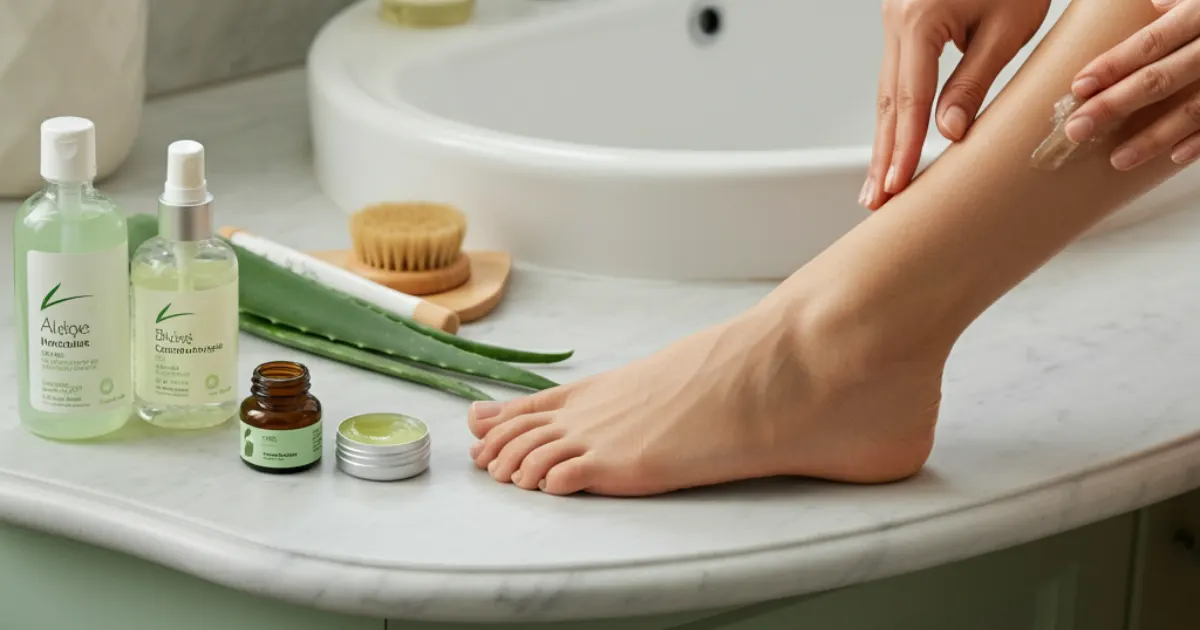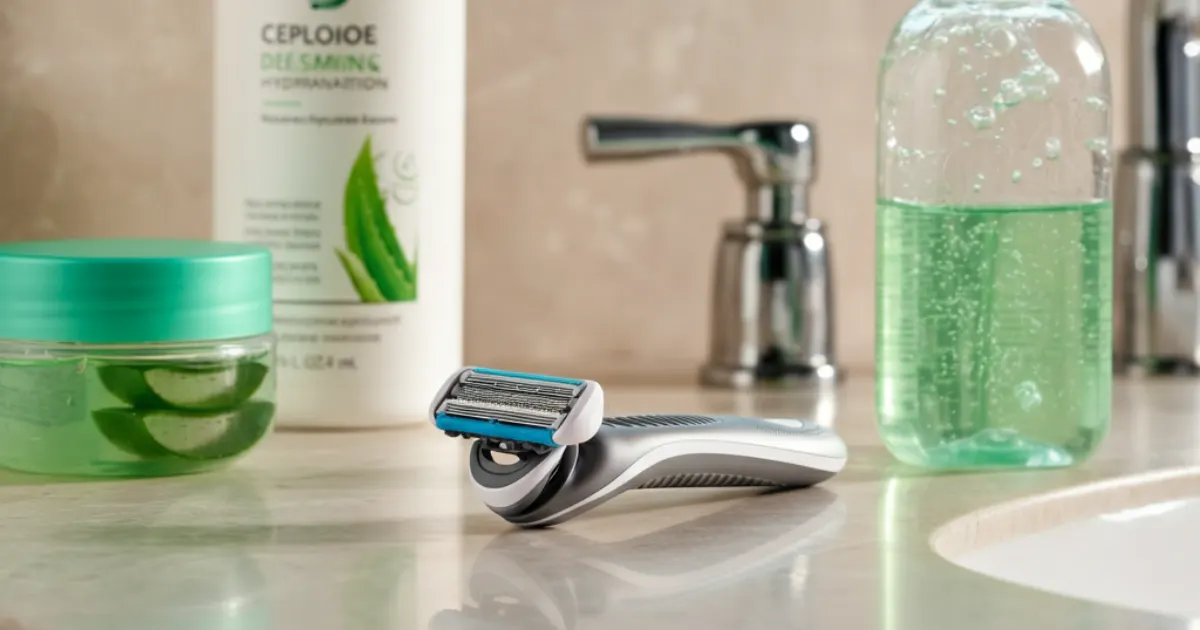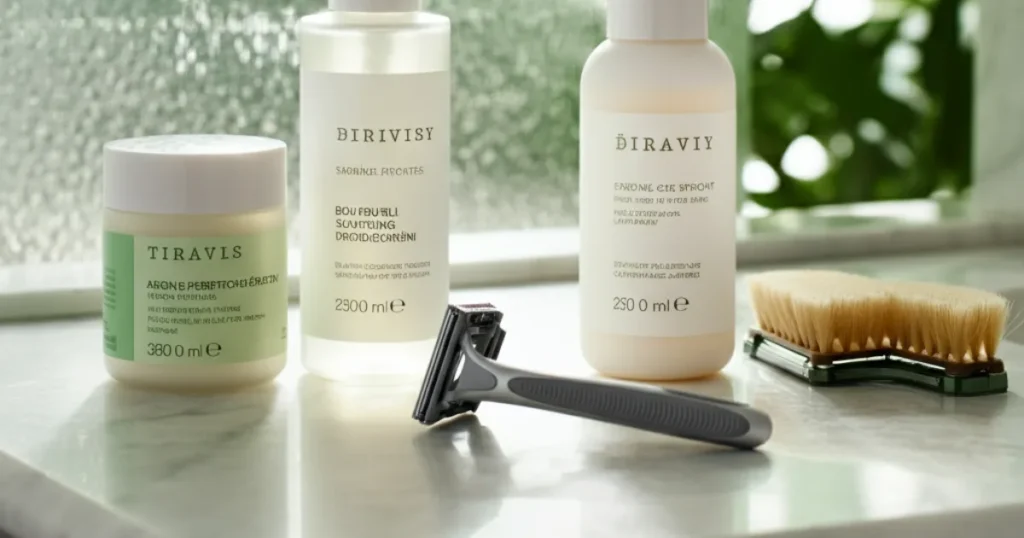Shaving can make you feel fresh and confident, but those pesky razor bumps in the pubic area? Not so much. If you’ve ever noticed red, itchy, or bumpy skin after shaving down there, you’re not alone. Razor bumps, also called pseudofolliculitis barbae, happen when shaved hairs curl back into the skin, causing irritation. The pubic area is extra sensitive, so these bumps can be super uncomfortable. Don’t worry, though—this guide is here to help you treat razor bumps quickly and safely, prevent them from coming back, and keep your skin happy. Let’s dive in!
What Are Razor Bumps and Why Do They Happen?
Razor bumps are those annoying little red or pus-filled bumps that pop up after shaving. They happen when shaved hairs grow back into the skin instead of out, causing inflammation. In the pubic area, your skin is super delicate, and the hair is often coarse or curly, which makes razor bumps more likely. Here’s why they love to show up down there:
- Sensitive Skin: The pubic area has thinner skin than other parts of your body, so it gets irritated easily.
- Curly or Coarse Hair: If your hair is curly, it’s more likely to curl back into the skin after shaving.
- Shaving Habits: Using a dull razor, shaving too closely, or not prepping your skin can make things worse.
You might notice itching, redness, or even a bit of pain. For some, these bumps can lead to scarring or dark spots if not treated properly. But don’t panic—there are plenty of ways to soothe and fix them!
Quick Ways to Soothe Razor Bumps

If you’re dealing with razor bumps right now, you want relief fast. Here are some simple, safe steps to calm your skin and reduce discomfort:
1. Stop Shaving for a Bit
Give your skin a break from shaving for at least 1–2 weeks. This lets the hair grow out a little, which can help trapped hairs pop free and reduce irritation. It might feel weird to skip shaving, but your skin will thank you.
2. Try a Cool Compress
Grab a clean washcloth, soak it in cold water, and gently press it on the bumpy area for 5–10 minutes. This cools the skin, reduces swelling, and feels super soothing. You can do this a couple of times a day when the bumps are really bothering you.
3. Use Over-the-Counter Products
Some gentle products can work wonders:
- Hydrocortisone Cream (1%): This reduces redness and swelling. Apply a thin layer once or twice a day, but don’t use it for more than a week unless a doctor says it’s okay.
- Aloe Vera Gel: Fresh from the plant or a store-bought version, aloe vera cools and hydrates irritated skin. Dab it on after washing the area.
- Witch Hazel or Tea Tree Oil: These natural antiseptics can calm inflammation and prevent infection. Mix a few drops of tea tree oil with a carrier oil (like coconut oil) to avoid irritation, and apply with a cotton pad.
4. Gently Exfoliate
Exfoliating helps free trapped hairs, but you’ve got to be gentle with the sensitive pubic area. Use a soft washcloth or a mild scrub (like one made for sensitive skin) to lightly rub the area in circular motions. Do this 2–3 times a week, and don’t scrub too hard—it can make things worse.
These steps can help you feel better in a day or two, but let’s talk about how to keep those bumps away for good.
Long-Term Fixes for Razor Bumps
Once the bumps are under control, you’ll want to stop them from coming back. Here are some tried-and-true ways to treat and prevent razor bumps in the long run:
Master Your Shaving Game
Shaving the right way can make a huge difference. Here’s how to do it:
- Use a Sharp Razor: A dull blade tugs at hairs and irritates skin. Try a single-blade razor or an electric trimmer designed for sensitive areas.
- Shave with the Grain: Shaving in the direction your hair grows (not against it) reduces the chance of hairs curling back into the skin.
- Prep Your Skin: Take a warm shower or apply a warm towel to soften the hair and open pores. Use a shaving cream or gel made for sensitive skin to create a smooth glide.
Keep Your Skin Moisturized
Dry skin can make razor bumps worse. After shaving or showering, pat the area dry and apply a fragrance-free moisturizer like Cetaphil, CeraVe, or even a dab of coconut oil. This keeps your skin soft and helps prevent irritation. Do this daily, even when you’re not shaving.
Try Targeted Treatments
For stubborn bumps, these products can help:
- Salicylic Acid: This gently exfoliates and unclogs pores. Look for a low-strength (2%) product and apply it sparingly.
- Benzoyl Peroxide: This fights bacteria and reduces inflammation. Start with a 2.5% formula to avoid dryness.
- Retinoid Creams: For severe cases, a dermatologist might prescribe a retinoid like tretinoin to speed up skin cell turnover and prevent ingrown hairs.
Explore Other Hair Removal Options
Shaving isn’t the only way to stay smooth. Here are some alternatives:
- Waxing or Sugaring: These pull hair out from the root, reducing the chance of ingrown hairs. They can be painful, but the results last longer (3–6 weeks).
- Laser Hair Removal: This is a long-term option that reduces hair growth over time. It’s pricier (sessions can cost $100–$500), but it’s great for chronic razor bumps. Talk to a professional to see if it’s right for you.
Home Remedies You Can Try
If you love natural solutions, there are some safe and effective home remedies for razor bumps. Always test these on a small patch of skin first to make sure you don’t have a reaction.
Soothing Natural Fixes
- Apple Cider Vinegar: Mix one part vinegar with three parts water, then dab it on with a cotton ball to reduce inflammation. Rinse after 5 minutes to avoid irritation.
- Honey and Oatmeal Mask: Mix a tablespoon of honey with a teaspoon of ground oatmeal to make a soothing paste. Apply it for 10 minutes, then rinse gently. This calms and exfoliates at the same time.
- Chamomile Tea Compress: Brew a cup of chamomile tea, let it cool, and soak a cloth in it. Place it on the bumps for 10 minutes to ease redness and itching.
DIY Exfoliating Scrub
Make a gentle scrub by mixing a tablespoon of sugar with a teaspoon of coconut oil. Rub it lightly on the area in circular motions, then rinse. Use this once or twice a week to keep skin smooth and free of trapped hairs. Avoid harsh ingredients like salt or undiluted baking soda—they can irritate sensitive skin.
A Quick Note
Natural remedies are great, but don’t overdo it. Stick to gentle options, and if your skin feels worse, stop using them and check with a doctor.
When to See a Doctor
Most razor bumps clear up with home care, but sometimes you need a pro. Here’s when to reach out to a dermatologist:
- Signs of Infection: If you see pus, lots of redness, or feel pain that’s getting worse, it could be infected.
- Scarring or Dark Spots: If bumps leave marks or dark patches, a doctor can help prevent long-term damage.
- No Improvement: If bumps don’t get better after 2–3 weeks of home treatment, it’s time to get expert advice.
A dermatologist might suggest stronger treatments like antibiotic creams or chemical peels. For chronic cases, they may recommend laser therapy to reduce hair growth and prevent bumps.
How to Prevent Razor Bumps in the Future

The best way to deal with razor bumps? Stop them before they start. Here are some easy prevention tips:
Prep Like a Pro
- Cleanse First: Wash the area with a gentle, fragrance-free cleanser to remove dirt and bacteria.
- Use Pre-Shave Oil: A few drops of pre-shave oil (or even olive oil) softens hair and makes shaving smoother.
- Exfoliate Regularly: Gently exfoliate 1–2 times a week to prevent dead skin from trapping hairs.
Pick the Right Tools
- Invest in a high-quality razor or trimmer designed for sensitive skin. Brands like Billie or Schick Hydro Silk are great options.
- Skip multi-blade razors if you have curly hair—they can cut too close and cause ingrown hairs.
Take Care After Shaving
- Rinse with cool water to close pores, then pat dry (don’t rub!).
- Apply an alcohol-free aftershave or soothing lotion to calm the skin.
- Moisturize daily to keep your skin healthy and strong.
Lifestyle Tips
- Wear loose, breathable underwear to avoid friction.
- Keep the area clean to prevent bacteria from causing infections.
Busting Razor Bump Myths
There’s a lot of bad advice out there, so let’s clear up a few myths:
- Myth: Shaving against the grain prevents bumps. Truth: This can actually cause more ingrown hairs.
- Myth: Toothpaste fixes razor bumps. Truth: Toothpaste can irritate sensitive skin and make things worse.
- Myth: Baking soda alone is a cure. Truth: It’s too harsh for the pubic area and can dry out your skin.
Stick to proven methods like the ones in this guide for the best results.
FAQs
Are razor bumps the same as an infection?
Not always. Razor bumps are caused by ingrown hairs, but they can get infected if bacteria get into the skin. If you see pus or feel a lot of pain, it might be infected, so check with a doctor.
Can I pop or pick at razor bumps?
No! Picking or popping can lead to infection or scarring. Instead, gently exfoliate or use soothing products to help the hair come out naturally.
How long does it take for razor bumps to go away?
With proper care, most bumps improve in a few days to a week. If they last longer or get worse, try stronger treatments like salicylic acid or see a dermatologist for help.
Wrapping It Up
Razor bumps in the pubic area can be a pain (literally), but they’re totally treatable with the right approach. Start with quick fixes like cool compresses and aloe vera to calm your skin, then adopt better shaving habits and moisturizing routines to keep bumps away. If you’re into natural remedies, try gentle options like honey or chamomile. And if things don’t improve or you notice signs of infection, don’t hesitate to see a dermatologist—they’ve got your back.
With a little patience and care, you can say goodbye to razor bumps and hello to smooth, comfortable skin. Got persistent bumps or questions? Talk to a doctor and keep these tips in your routine. Your skin deserves it!

